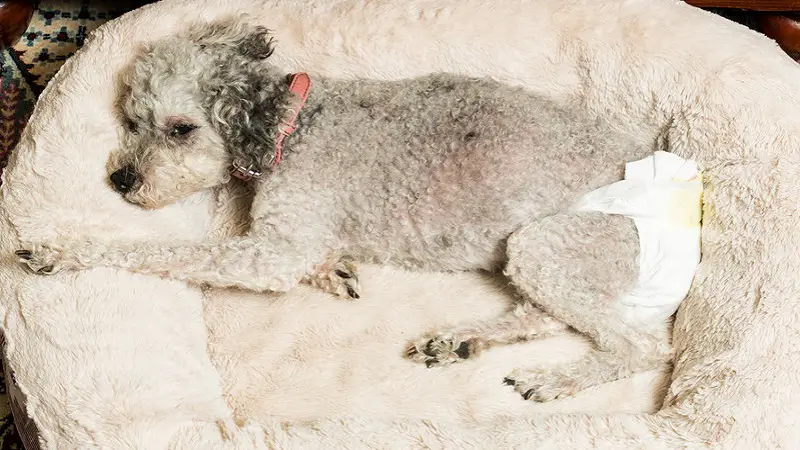When your dog starts to age, their health can start to decline. Many age-related symptoms aren’t noticed until they have progressed quite far.
This is because many dog owners watch for the decline in appetite or energy and don’t notice other things that are occurring in small increments. Additionally, some of the signs of old age in a dog can be mistaken as behavioral issues.

4 age-related issues that occur in older dogs
1. Bumps start to develop
Tumors are common in older dogs, and most of them are not threatening; even though these bumps may not look healthy with their large, round masses that seem to be floating on the body, they are perfectly natural.
Keeping your eyes on these bumps is what is essential. Any changes in size or shape should be noted and reported to your veterinarian. If they feel it is necessary to remove the bumps and get a biopsy then you may need to do that; otherwise, most bumps are left alone to remain on the dog until death.
2. Senses start to decline
Older dogs start to develop hearing and eyesight problems, but it may go unnoticed by an owner because the dog functions just as well as they did before their senses started to decline. Dogs are much more dependent on their senses as a whole, and since they don’t read newspapers or listen to the television, they don’t walk around squinting when their sight starts to go, and they certainly don’t ask you to turn the volume up!
There are many signs that will let you know your dogs senses are starting to go. For instance, you may notice that your dog is not paying attention to your commands like they used to and you may start to accuse them of being disobedient or ignoring you. You may start to notice that your dog gets startled by you even though you have been standing in front of them. They may also seem to react slower than they used to.
If you notice your dog seems to be losing one of their senses then you may want to take them in to see their veterinarian, as problems such as cataracts may be treatable with surgery or with medications. The signs of senses diminishing may also be an indication that they have a more serious issue occurring.
3. Incontinence
Not only are older dogs prone to incontinence, but some breeds are more prone than others. For instance, after some dogs like the Doberman are spayed, they are prone to incontinence later on in life.
You may not notice the incontinence at first as they may only dribble a few spots of pee here and there, and possibly clean it up after they have messed. Soon you will notice more apparent spots that their blankets or beds have been peed on.
Walking and leaking is another sign that your dog has developed incontinence. They will dribble out a bit of pee with every step or two they take.
Incontinence can be fixed with some medicine, such as Propalin. Water may need to be taken away at night time to prevent a soaked bed in the morning. Walks may need to be increased so that the dog can eliminate a large amount of pee with very little left to spill out.
4. Stiff and achy joints
Dogs aren’t immune to stiffer joints and arthritis in their old age. Many older dogs have a hard time to get moving in cold weather, and in the morning, and exhibit sore and stiff muscles when trying to get up or walk. Although many dogs will start to exhibit more enthusiasm after walking for a moment as they have a zest for walks that most humans do not have – even if they’re having some pain.
There is no cure for stiffness or arthritis, but there are treatments and medications that can help your dog be more comfortable. Your veterinarian may recommend aspirin, supplements, or anti-inflammatory medication. You may want to buy softer or orthopaedic beds for your dog that give them a cushion between the cold and hard floor and their joints. All of these things may be required by your dog for the rest of their life.
Of course, stiff joints can be viewed as laziness. For example, you call your dog to come and they sit there like a lump staring at you. It’s extremely easy to blame them for disobedience or laziness when they actually just don’t want to get up because of pain.
Summary
Always watch for these four signs of ageing in your dog. While they can sometimes be behavioral issues, you should always make sure that there’s not a health problem there first. As long as your dog has energy and an appetite then they should be able to deal with their ageing issues just fine.
